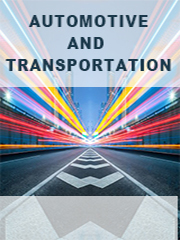Report overview
Automotive airbag inflators are one of the main components of airbag system. It is majorly made of member chamber consists of chemical propellants or stored gas or both, which are ignited to inflate the airbag during the vehicle crash. Different airbag type employs different airbag inflator technologies in the automotive industry.
This report aims to provide a comprehensive presentation of the global market for Automotive Airbag Inflator, with both quantitative and qualitative analysis, to help readers develop business/growth strategies, assess the market competitive situation, analyze their position in the current marketplace, and make informed business decisions regarding Automotive Airbag Inflator. This report contains market size and forecasts of Automotive Airbag Inflator in global, including the following market information:
Global Automotive Airbag Inflator Market Revenue, 2018-2023, 2024-2029, ($ millions)
Global Automotive Airbag Inflator Market Sales, 2018-2023, 2024-2029, (M Units)
Global top five Automotive Airbag Inflator companies in 2022 (%)
The global Automotive Airbag Inflator market was valued at US$ 3405.7 million in 2022 and is projected to reach US$ 4784.7 million by 2029, at a CAGR of 5.0% during the forecast period. The influence of COVID-19 and the Russia-Ukraine War were considered while estimating market sizes.
The Automotive Airbag Inflator is classified into Pyrotechnic Gas Inflator, Hybrid Gas Inflator and Stored Gas Inflator according to the product type. As of 2019, Pyrotechnic Gas Inflator segment occupied the largest market contributing more than 56% of the total market share, followed by Hybrid Inflator, with nearly 28% share.
The Automotive Airbag Inflator market is very concentrated market; key players include Autoliv, Daicel Corporation, ZF TRW, Joyson Safety Systems, Nippon Kayaku and ARC Automotive Inc., etc.; the revenue of top five manufacturers accounts about 90% of the total revenue in 2019. Rising vehicle accidents and crashes with increasing on-road traffic will drive the market size over the forecast period. Automobile manufacturers are adapting crash avoidance measures during vehicle engineering to ensure passenger safety.
The Automotive Airbag Inflator have wide range of applications: Frontal Airbags, Side Airbags, Curtain Airbags, Knee Airbags and Others. Frontal Airbags consumed the largest part, with about 43% of the market share by sales volume in 2019, followed by Side Airbags (about 41%).
We surveyed the Automotive Airbag Inflator manufacturers, suppliers, distributors and industry experts on this industry, involving the sales, revenue, demand, price change, product type, recent development and plan, industry trends, drivers, challenges, obstacles, and potential risks.
Total Market by Segment:
Global Automotive Airbag Inflator Market, by Type, 2018-2023, 2024-2029 ($ Millions) & (M Units)
Global Automotive Airbag Inflator Market Segment Percentages, by Type, 2022 (%)
Pyrotechnic Gas Inflator
Hybrid Gas Inflator
Stored Gas Inflator
Global Automotive Airbag Inflator Market, by Application, 2018-2023, 2024-2029 ($ Millions) & (M Units)
Global Automotive Airbag Inflator Market Segment Percentages, by Application, 2022 (%)
Frontal Airbag
Side Airbag
Curtain Airbag
Knee Airbag
Other
Global Automotive Airbag Inflator Market, By Region and Country, 2018-2023, 2024-2029 ($ Millions) & (M Units)
Global Automotive Airbag Inflator Market Segment Percentages, By Region and Country, 2022 (%)
North America
US
Canada
Mexico
Europe
Germany
France
U.K.
Italy
Russia
Nordic Countries
Benelux
Rest of Europe
Asia
China
Japan
South Korea
Southeast Asia
India
Rest of Asia
South America
Brazil
Argentina
Rest of South America
Middle East & Africa
Turkey
Israel
Saudi Arabia
UAE
Rest of Middle East & Africa
Competitor Analysis
The report also provides analysis of leading market participants including:
Key companies Automotive Airbag Inflator revenues in global market, 2018-2023 (Estimated), ($ millions)
Key companies Automotive Airbag Inflator revenues share in global market, 2022 (%)
Key companies Automotive Airbag Inflator sales in global market, 2018-2023 (Estimated), (M Units)
Key companies Automotive Airbag Inflator sales share in global market, 2022 (%)
Further, the report presents profiles of competitors in the market, key players include:
ARC Automotive Inc.
Autoliv
Daicel Corporation
Joyson Safety Systems
Nippon Kayaku
ZF TRW
Outline of Major Chapters:
Chapter 1: Introduces the definition of Automotive Airbag Inflator, market overview.
Chapter 2: Global Automotive Airbag Inflator market size in revenue and volume.
Chapter 3: Detailed analysis of Automotive Airbag Inflator manufacturers competitive landscape, price, sales and revenue market share, latest development plan, merger, and acquisition information, etc.
Chapter 4: Provides the analysis of various market segments by type, covering the market size and development potential of each market segment, to help readers find the blue ocean market in different market segments.
Chapter 5: Provides the analysis of various market segments by application, covering the market size and development potential of each market segment, to help readers find the blue ocean market in different downstream markets.
Chapter 6: Sales of Automotive Airbag Inflator in regional level and country level. It provides a quantitative analysis of the market size and development potential of each region and its main countries and introduces the market development, future development prospects, market space of each country in the world.
Chapter 7: Provides profiles of key players, introducing the basic situation of the main companies in the market in detail, including product sales, revenue, price, gross margin, product introduction, recent development, etc.
Chapter 8: Global Automotive Airbag Inflator capacity by region & country.
Chapter 9: Introduces the market dynamics, latest developments of the market, the driving factors and restrictive factors of the market, the challenges and risks faced by manufacturers in the industry, and the analysis of relevant policies in the industry.
Chapter 10: Analysis of industrial chain, including the upstream and downstream of the industry.
Chapter 11: The main points and conclusions of the report.
